The Manual Calibration workflow for Calman Home provides all the tools needed to ensure color accuracy on your display. It is designed so users can manually adjust their color settings for accurate image presentation with confidence.

Each step of this workflow has been optimized to display relevant information, and automatically configure common settings. Both Pre-Calibration and Post-Calibration measurement steps are included for comparing pre- and post-performance.
Note: For best results, the workflow steps should be performed in order, as many steps include automation designed to be performed in order
Step 1
- From the Calman Menu in the top-left, choose Open Workflow Template and then Manual Calibration
- On the introduction screen, choose the Colorspace Target (SDR/HDR)
- This pre-configures the workflow for the desired targets.
- At the end of the selected workflow, you will have the chance to proceed to another colorspace target
Step 2
In this step, you’ll connect your Colorimeter and Pattern Generator to Calman and confirm your calibration targets, which have been pre-configured based on your colorspace choice in Step 1
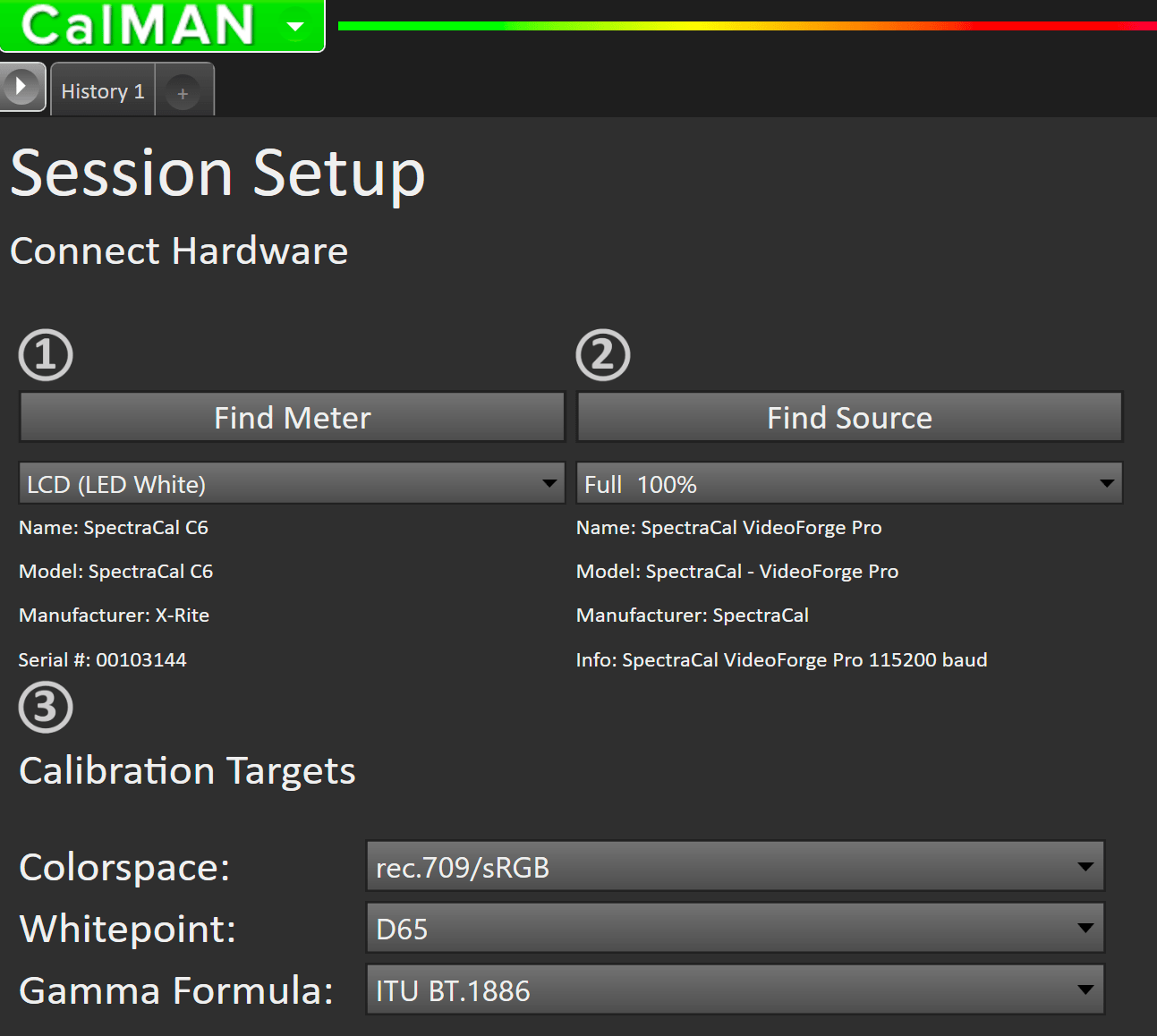
- Plug your meter into a USB port on the computer and press the Find Meter button on the left
- When your meter is connected, select your display type from the dropdown (this will vary by meter)
- Connect Pattern Source to your computer
- Click the Find Source button then select your source
- Select the pattern window size
- OLED: Window 10% recommended
- LCD: Constant APL 10 recommended
- Confirm your Calibration Targets
- Colorspace
- SDR: Rec.709/sRGB
- HDR: Rec.2020
- Whitepoint
- D65
- Colorspace
An accurate calibration requires consistent readings; if your readings are inconsistent it is likely related to power management on your display. Some things to try are:
- Disable power savings modes on your display (on-screen menus)
- Limit pattern size to 10% windows (source settings)
- Use pattern insertion (Settings Menu – Application Measurement Options)
- Increase pattern delay (source settings)
- Change meter sync mode (meter settings)
- Use multiple readings with averaging (meter settings)
Step 3
This step offers guidance on meter placement for flat screen displays and projector screens
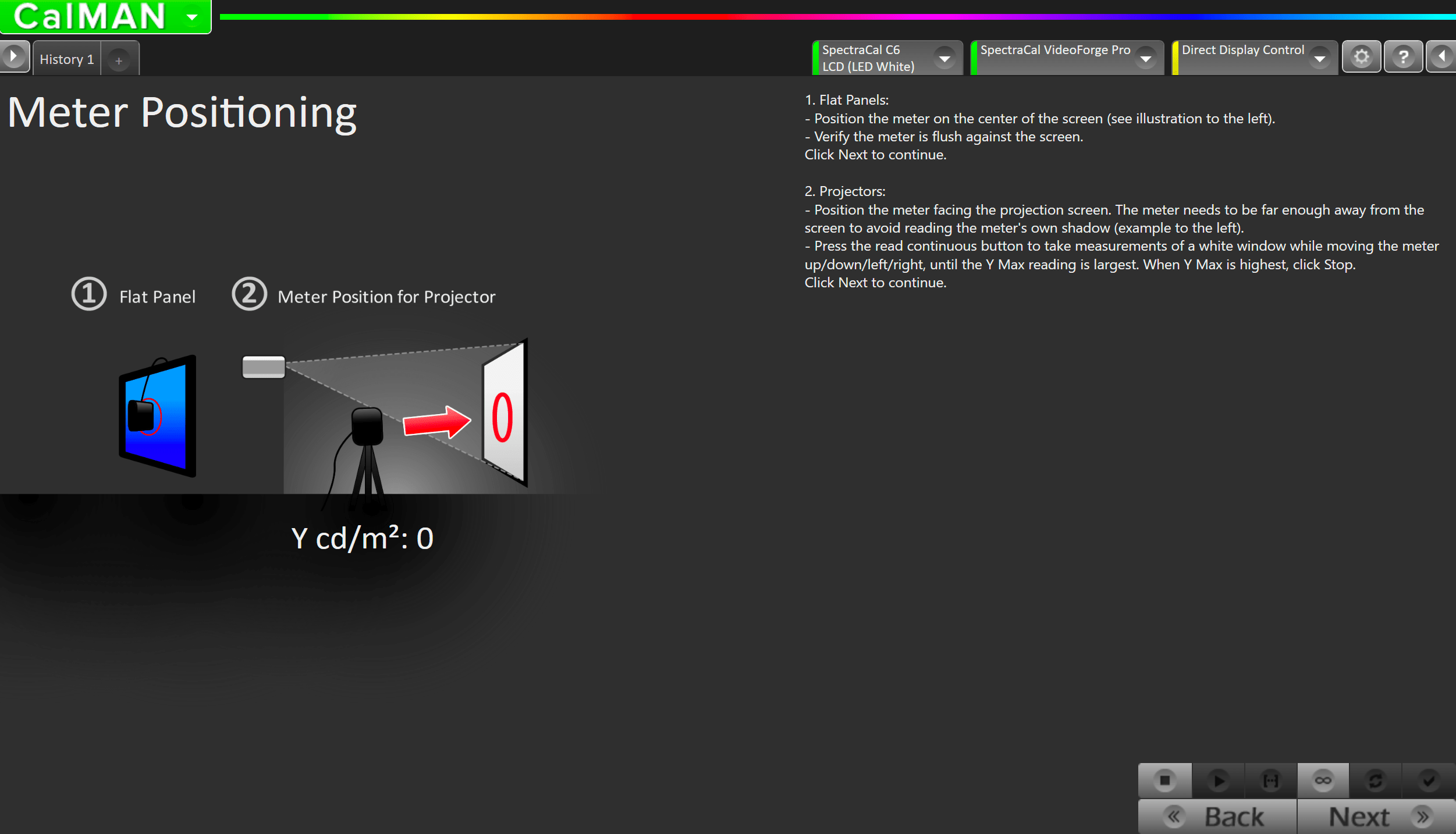
Step 4
In this step, you’ll take readings of your display before the calibration. These will be used to compare your calibration results
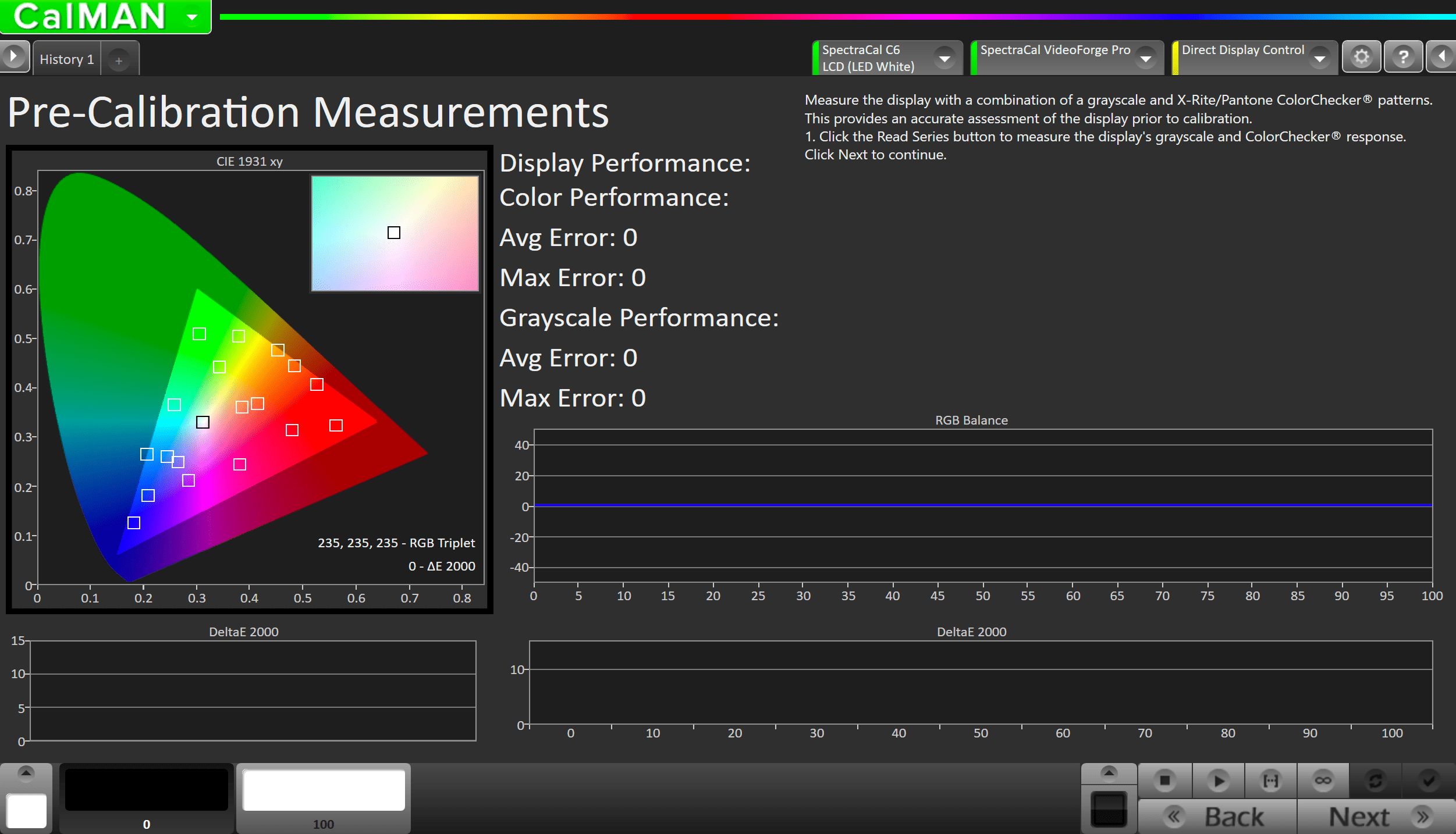
- To take Pre-Calibration Measurements click the Read Series […] button to measure the display’s grayscale and ColorChecker response
- This will provide a point of reference to compare your calibration results
Step 5
Here you will be able to manually adjust your Brightness and Contrast to ensure the display is not clipping away any RGB values near white
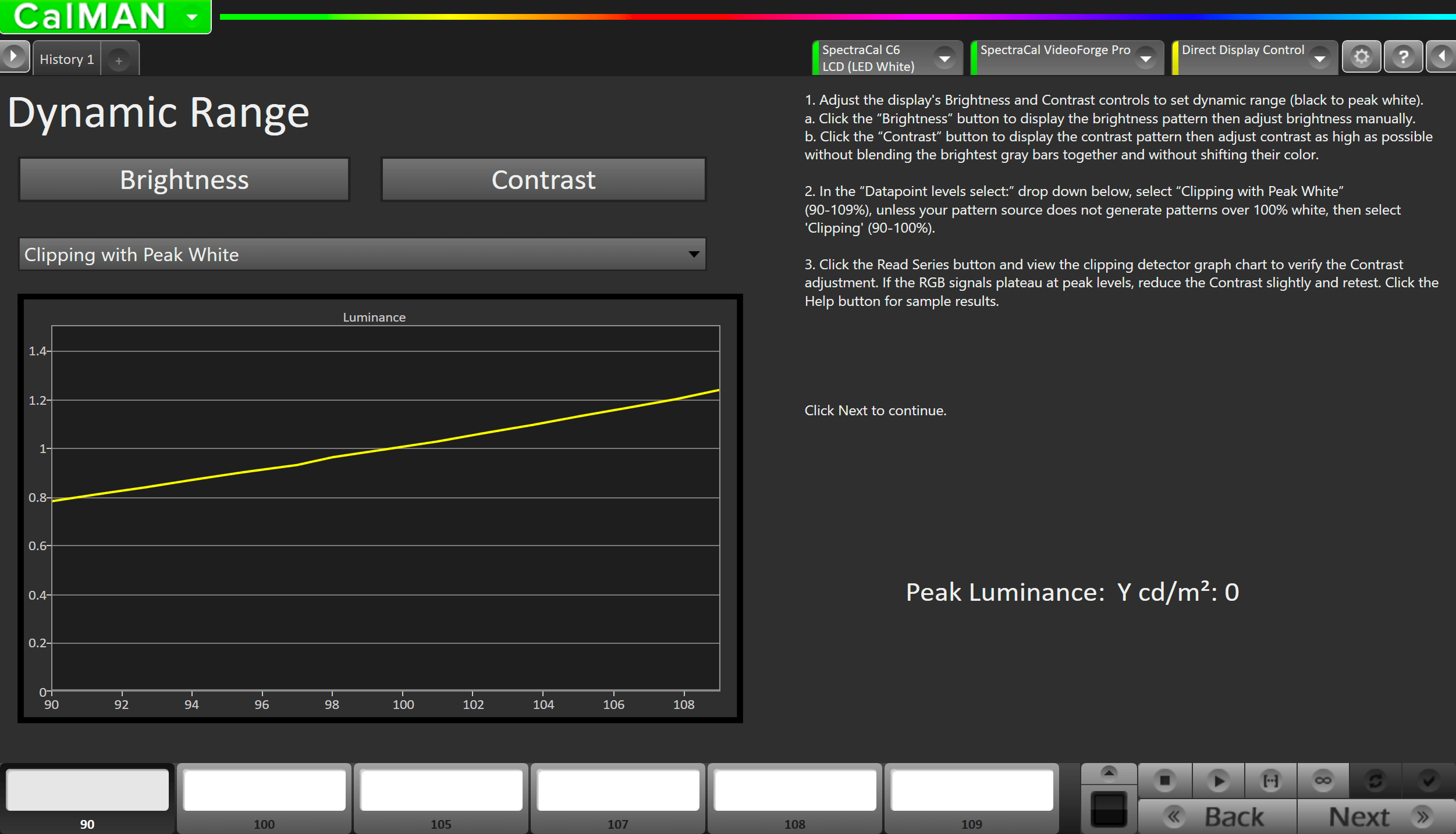
Note: This step is not present in HDR
- Adjust the display’s Brightness and Contrast controls to set dynamic range (black to peak white).
- Click the Brightness button to display the brightness pattern then adjust brightness manually.
- Click the Contrast button to display the contrast pattern then adjust contrast as high as possible without blending the brightest gray bars together and without shifting their color.
- In the Datapoint levels drop-down, select Clipping with Peak White (90-109%), unless your pattern source does not generate patterns over 100% white, then select Clipping (90-100%).
- Click the Read Series button and view the clipping detector graph chart to verify the Contrast adjustment.
- If the RGB signals plateau at peak levels, reduce the Contrast slightly and retest.
Step 6
In this step, you will be able to adjust the Luminance of your display to match your desired target. Luminance is a subjective target. SDR reference luminance is 100cd/m2, but you may need to target higher to account for the ambient light in your environment.
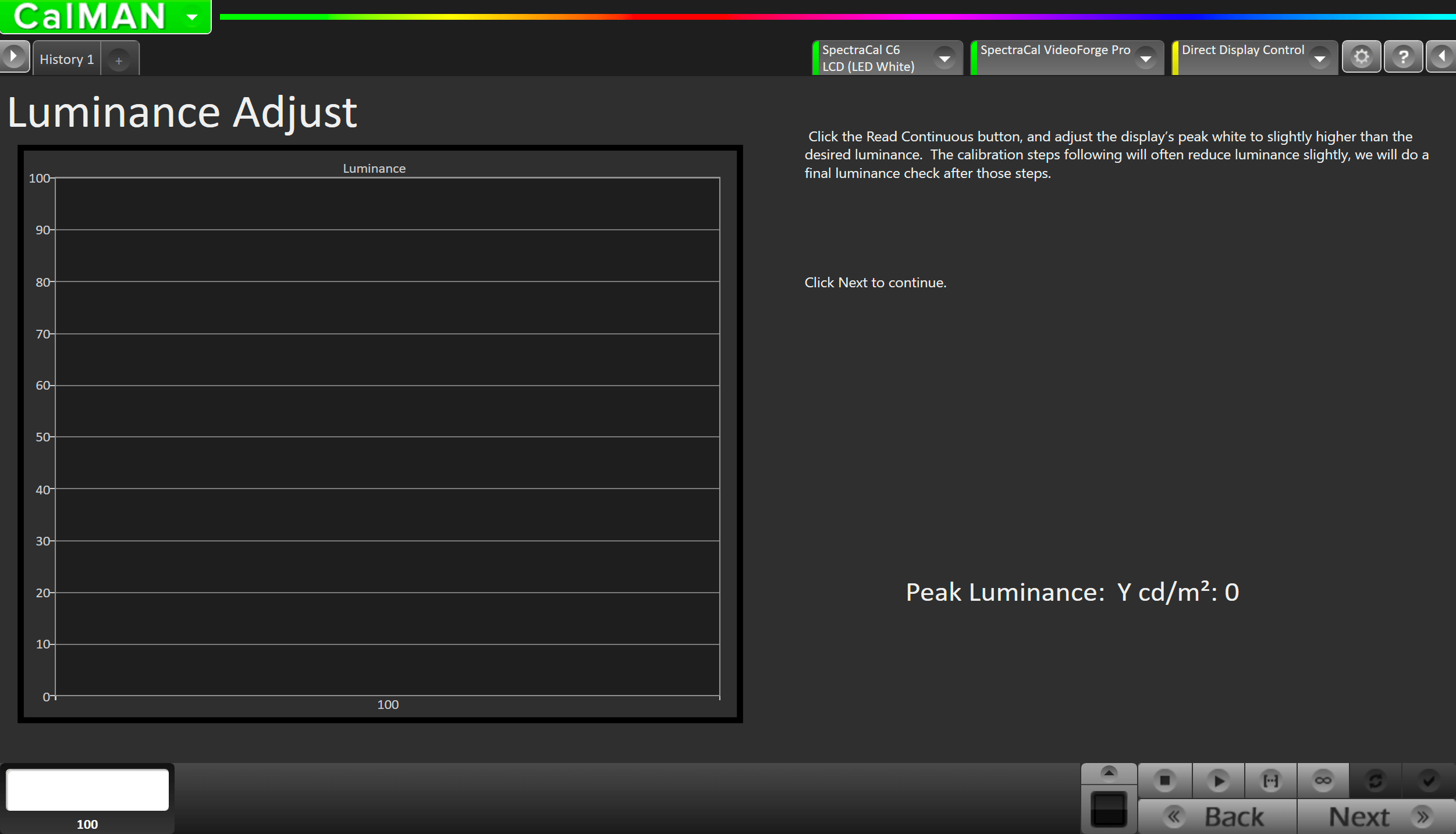
Note: This step is not present in HDR
- Click the Measure Luminance button to measure your TV’s light output at 100% white and adjust the display’s peak white to the desired luminance.
- Adjust your TV’s backlight/OLED light control so your TV is about 15% brighter than your final target to account for a reduction in luminance when calibrating the 1D LUT in the next step
- Press Stop when luminance adjustment is complete
Step 7
On this page, you’ll be able to adjust your display’s White Balance, or 2 point greyscale. The defaults points (30/80) are appropriate for most displays, but you can choose alternate points if your display adjusts greyscale at different points.
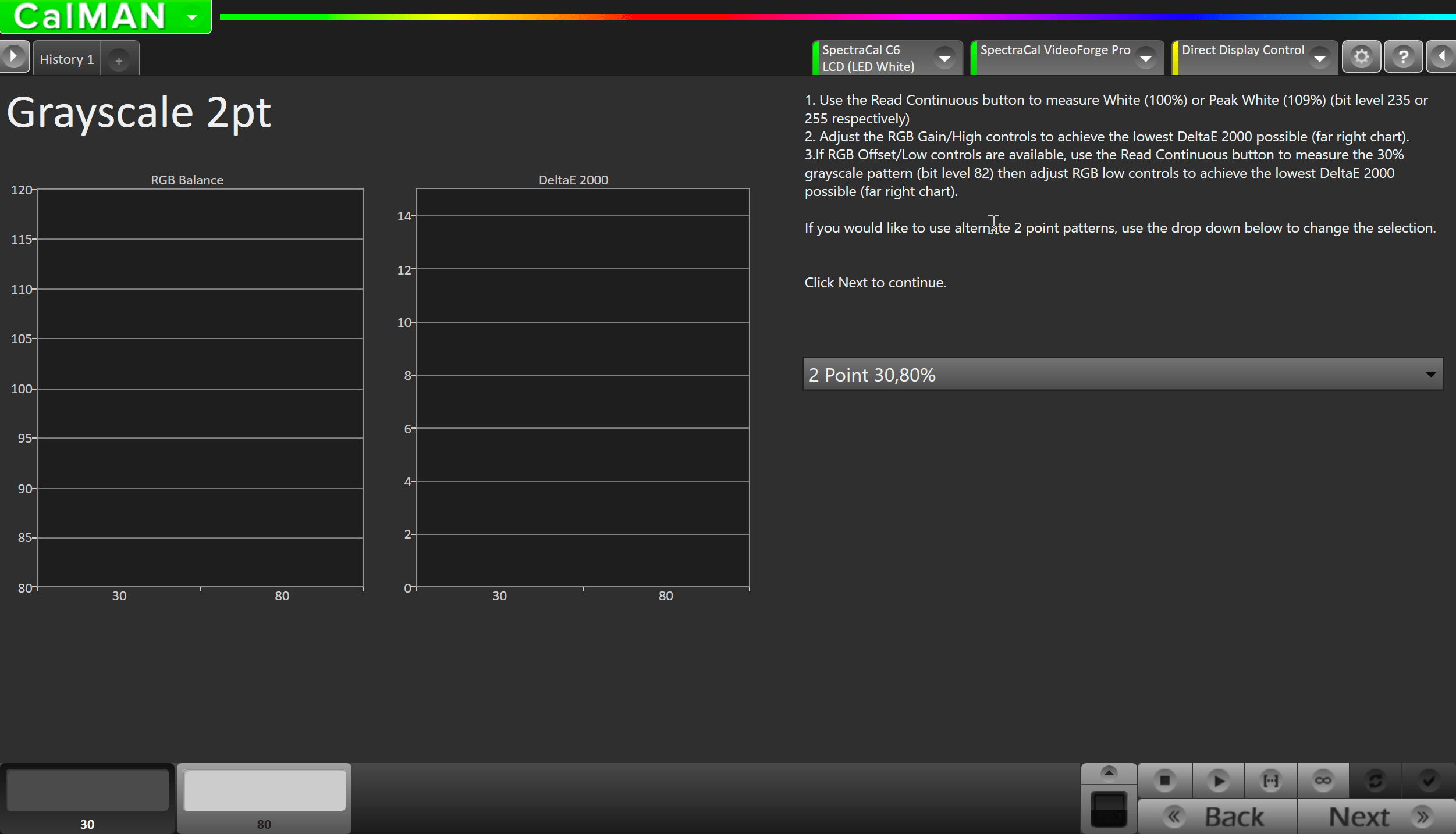
- This page will allow you to adjust the 2pt White Balance of your display.
- Use the Read Continuous button to measure the higher of the two greyscale patches shown. This can be modified with the dropdown on the right
- Adjust the RGB Gain/High controls to achieve the lowest DeltaE 2000 possible (far right chart).
- If RGB Offset/Low controls are available, use the Read Continuous button to measure the 30% grayscale pattern (bit level 82) then adjust RGB low controls to achieve the lowest DeltaE 2000 possible (far right chart).
If you would like to use alternate 2 point patterns, use the drop-down to change the selection.
Step 8
This page will allow you to adjust the Multipoint Greyscale of your display. Not all displays or picture modes will have this option
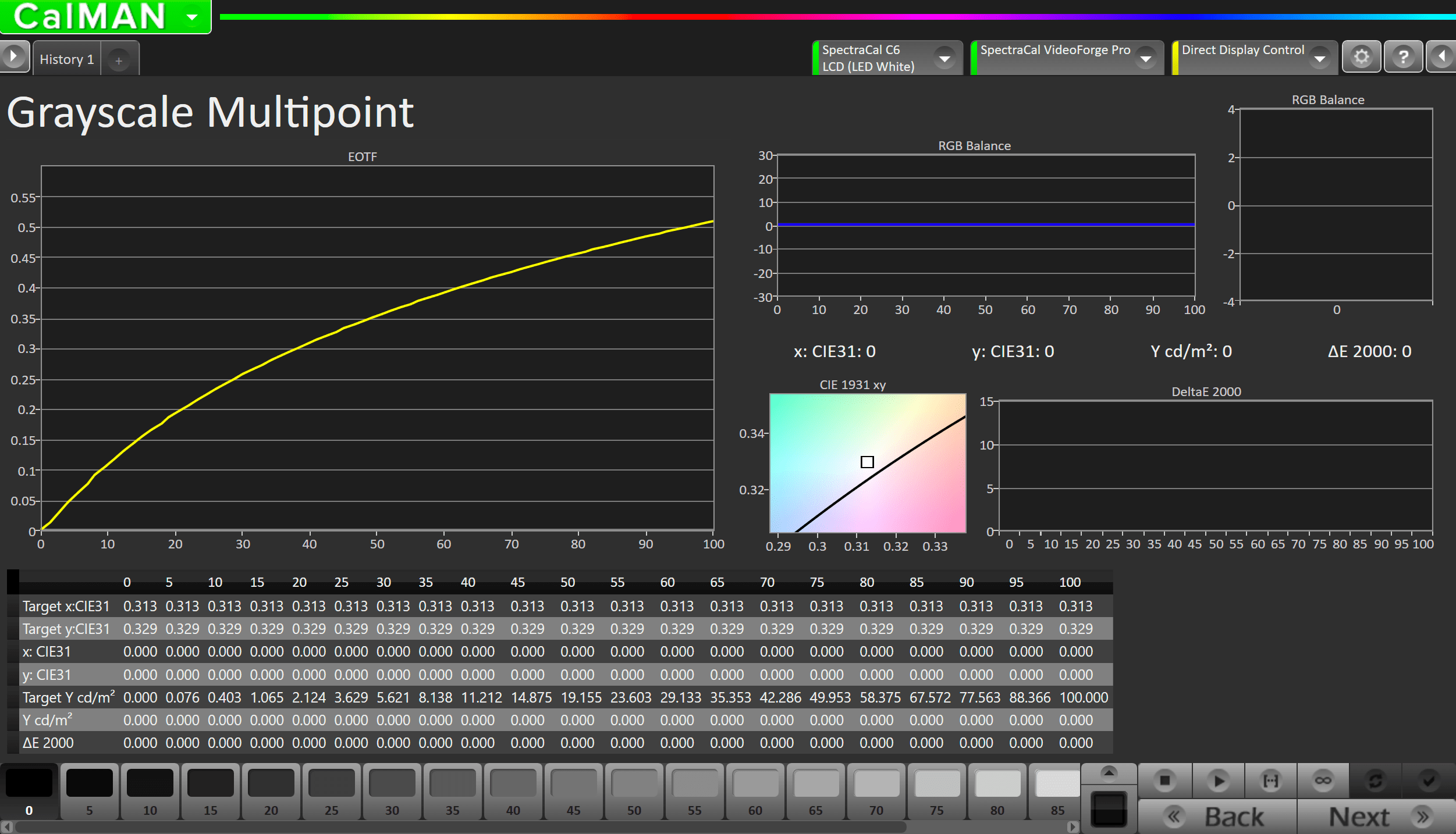
- The pattern slider at the bottom of Calman will be preloaded with a 21pt greyscale ramp from 0-100%.
- If your display uses different adjustment points you can choose an alternative ramp in the Workflow Basic Options
- Click the test patch you are adjusting on the display, and press the Read Continuous button to take readings as you adjust your display
Step 9
This page will allow you to adjust the Colorspace/CMS controls on your display
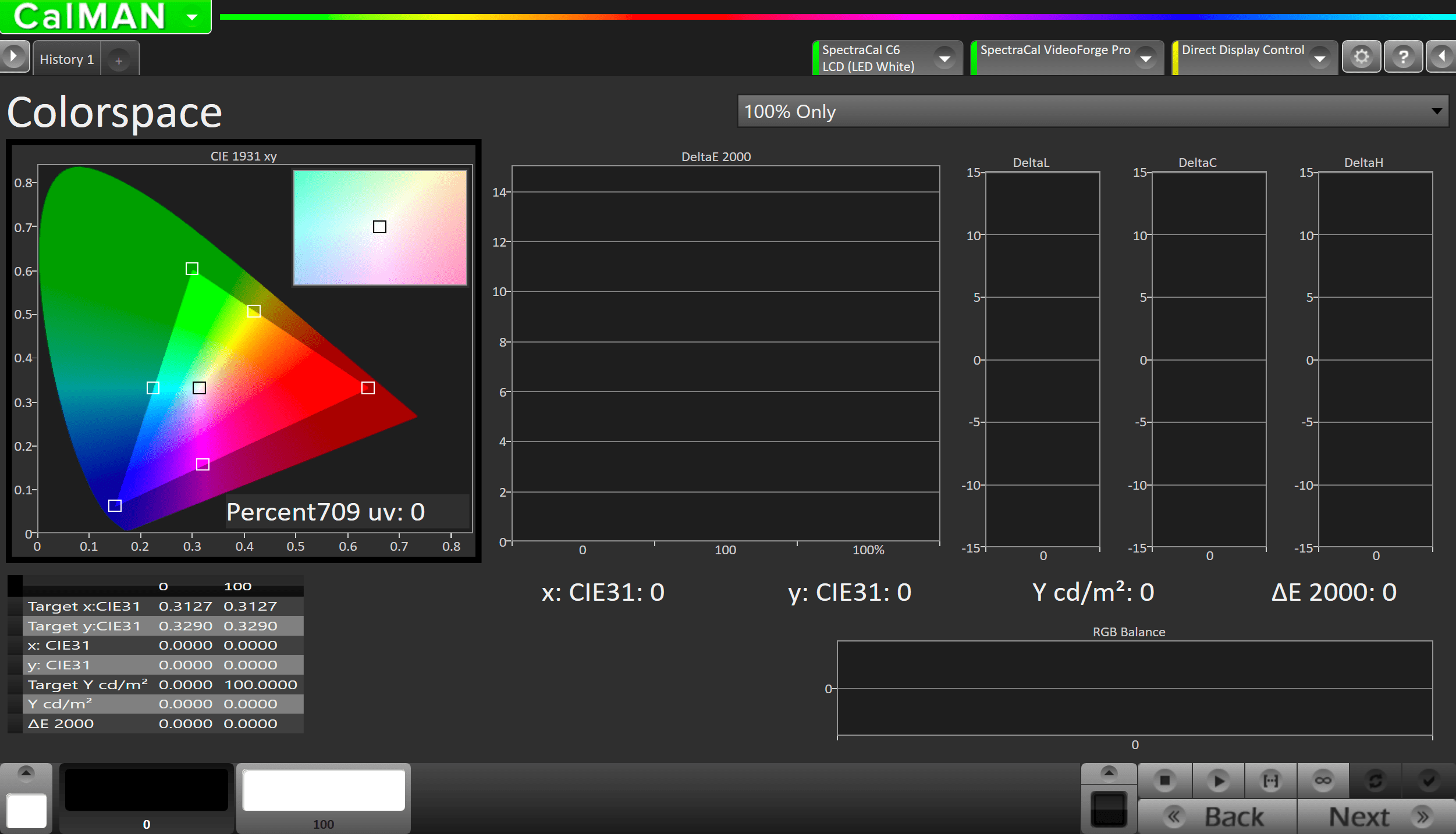
- By default, Calman will use 100% Saturations for SDR and 50% for HDR. If your display is better adjusted with another saturation level you can choose an alternate from the dropdown near the top
- Click the test patch you are adjusting on the display, and press the Read Continuous button to take readings as you adjust your display
- Press the Stop button before moving to the next test patch
Step 10
This page will allow you to do a final check on the overall luminance of the display.
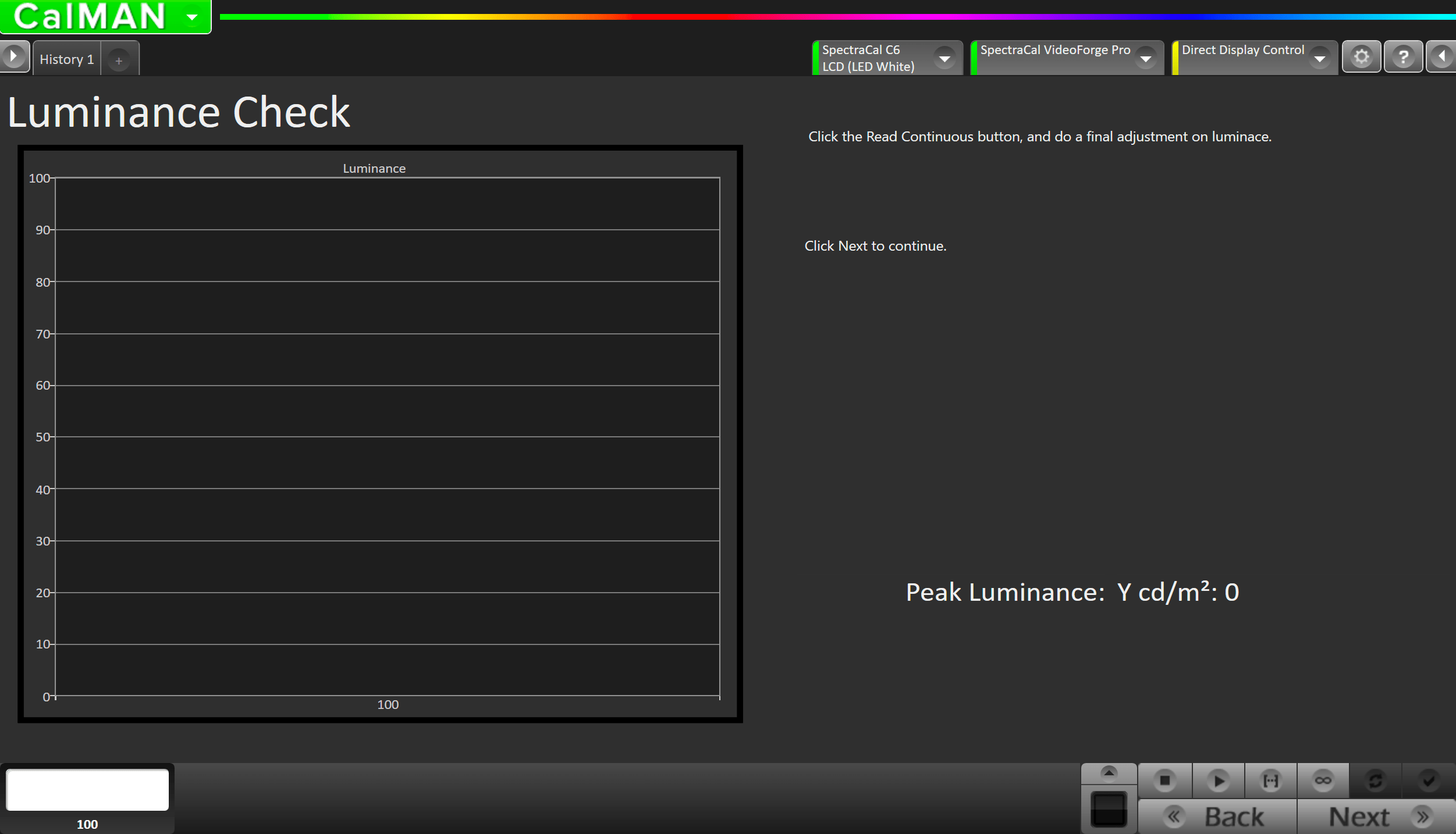
Note: This step is not present in HDR
- Adjustments to the Greyscale will normally result in a 5-15% drop in luminance. If this is the case, adjust the display back to your desired luminance target.
Step 11
In this step, you’ll take readings of your display after the calibration. These will be used to compare your calibration results
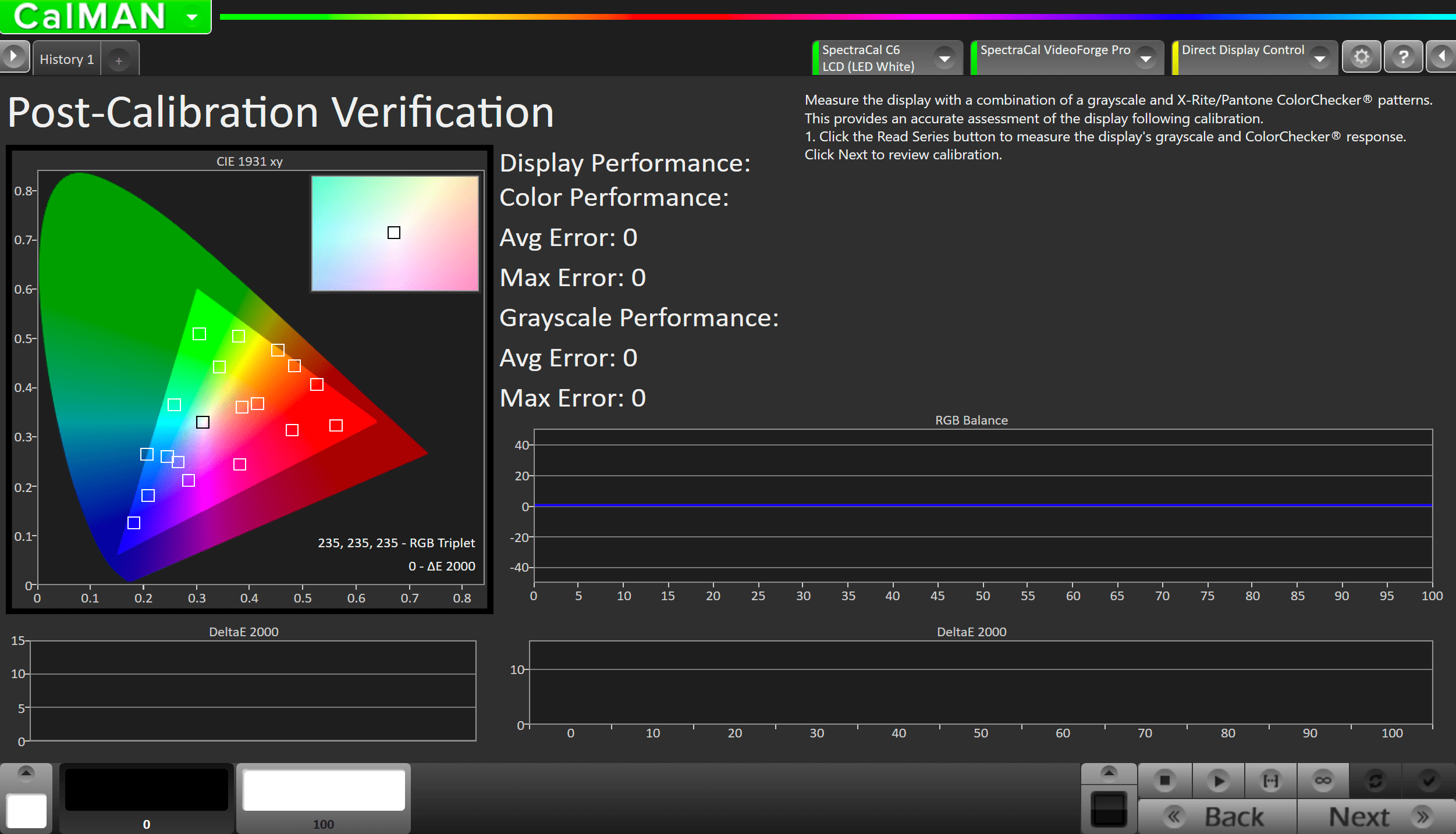
- Measure the display with a combination of a grayscale and X-Rite/Pantone ColorChecker patterns.
- This provides an accurate assessment of the display following calibration and will be represented along with the pre-calibration readings on the next page
- Click the Read Series […] button to measure the display’s grayscale and ColorChecker® response.
- Click Next to review calibration.
Step 12
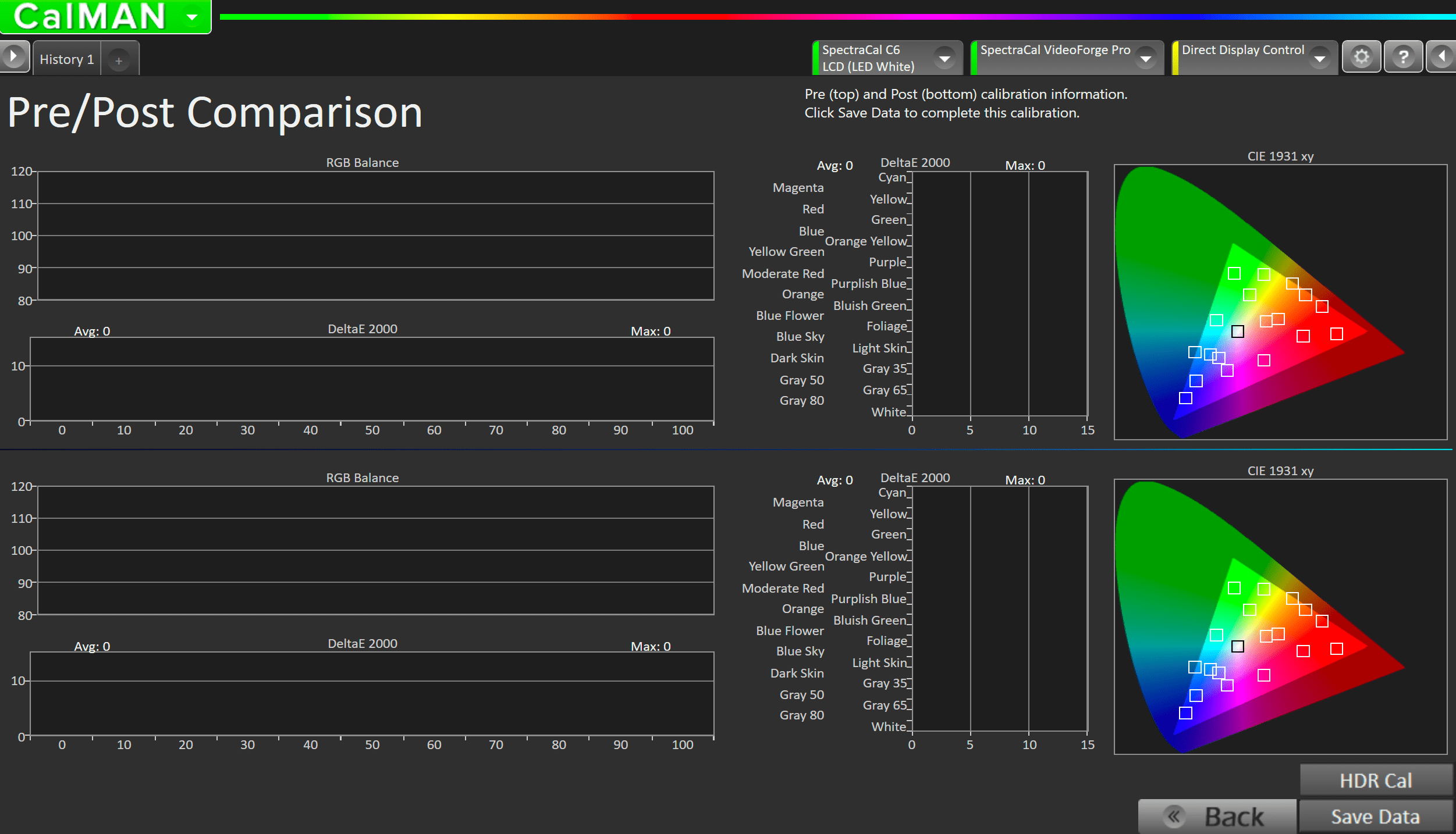
- Pre (top) and Post (bottom) calibration information will show the calibration results.
- Click Calibrate HDR to return to the introduction page, where you can choose to calibrate a new picture mode and/or colorspace
- Click Save Data to complete this calibration.